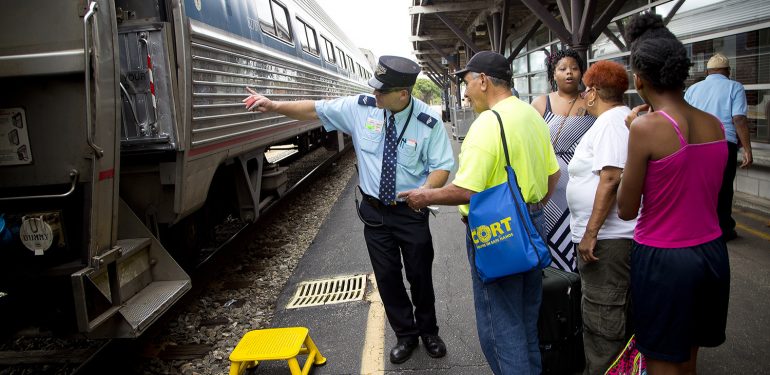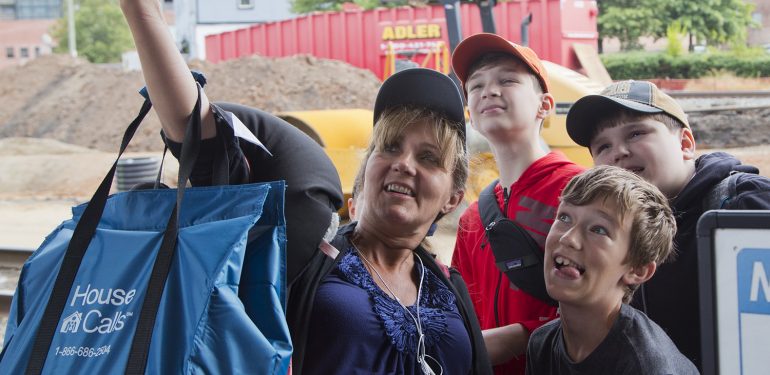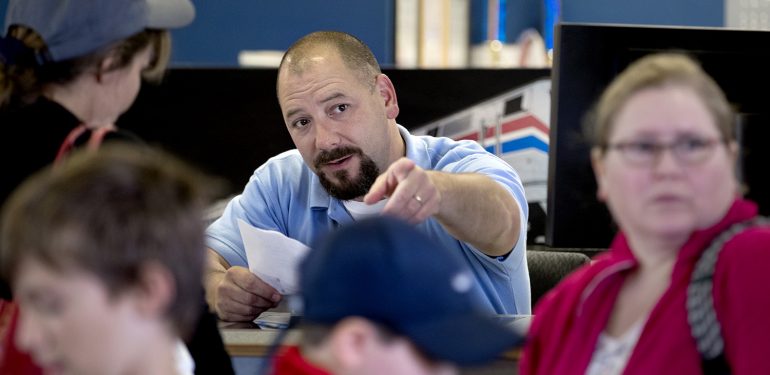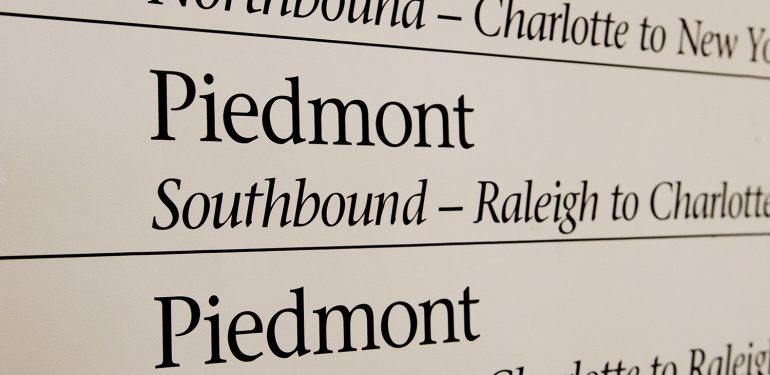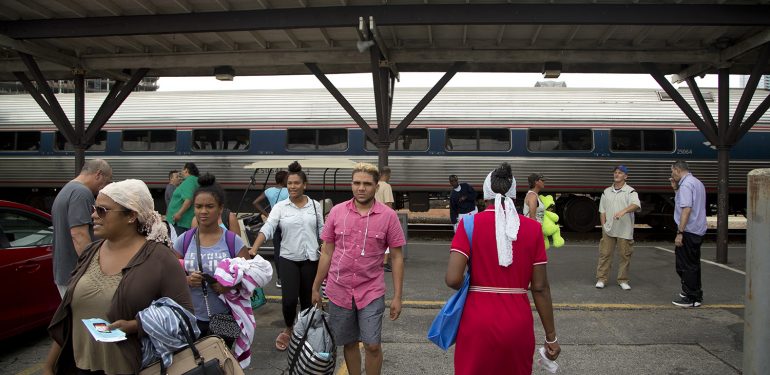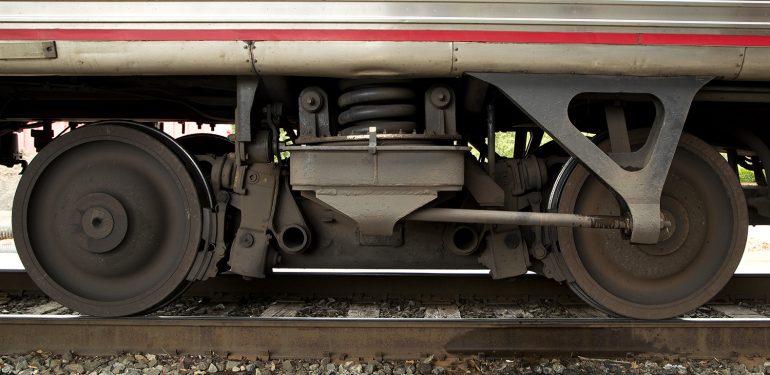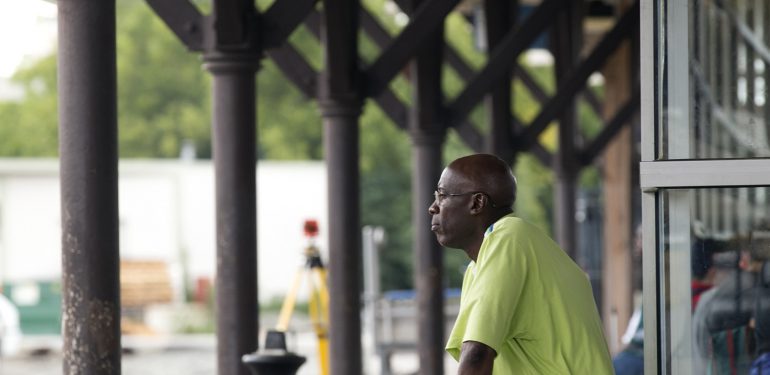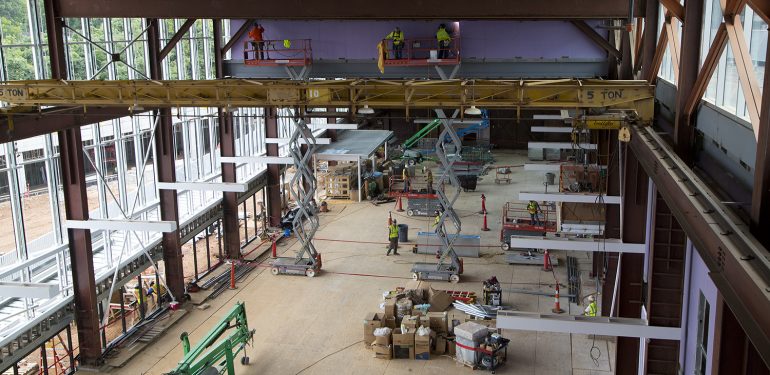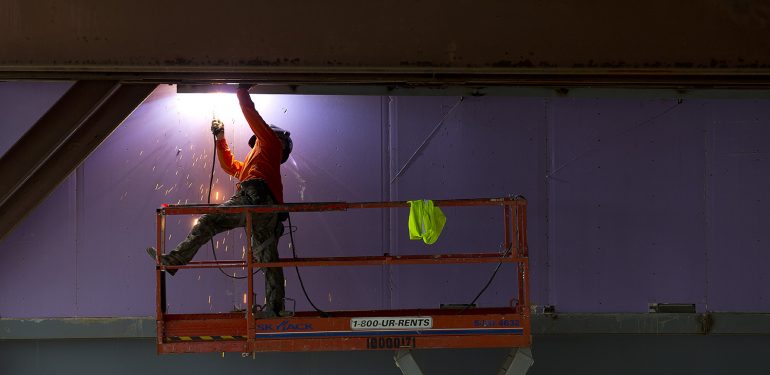Riding Raleigh’s Rails
into the future
by Henry Gargan
photographs by Chris Seward
At Raleigh’s Amtrak station, you can buy a ticket from a man behind a counter. When you round the corner to the luggage bay, the same man will greet you and take your bag. Earlier, you could have spied him out in front, spraying the weeds sprouting through cracks in the parking lot pavement. Once the last train leaves, he’ll be the one taking out the trash and cleaning the bathrooms.
This man is no lowly lackey – he’s the station’s lead ticket agent. The head honcho. His name is Gregg Shanno, and he finds himself almost 20 years into a career with Amtrak, still handling baggage like he did on his first day on the job, which was six days past his 19th birthday. Don’t worry. He’s still having a great time.
In upstate New York, where Shanno got his start, a small army of people ran the station, handling the daily herd of commuters traveling down the Hudson River toward the city as they have done for some 150 years. At the Raleigh station, just two people are on duty on any given day to manage the local trickle of passengers. The station’s humble trappings can be explained, in part, by geography and history.
Unlike train stations in many Northeastern cities, Raleigh’s was built after the country had already fallen in love with the automobile, and six years before President Dwight Eisenhower announced the Interstate Highway System. Even so, trains have long delivered commercial goods to and from our capital city. But they didn’t – and don’t – move nearly as many people around.
Seaboard Station, off Peace Street, is the most visible reminder of our local freight railways’ bygone vitality. Today, the station is home to Logan’s Garden Shop, where rows of perennials stand in the place of railway cars. Other signs of busier times can be found: A lonely turntable sits off Johnson Street, bereft of the roundhouse and locomotives it once served. Even the trains that do work today in Raleigh are largely invisible. Two major freight haulers, CSX and Norfolk Southern, have facilities tucked away on either side of Capital Boulevard north of downtown.
This is changing, though, and quickly. In January, a very visible, $88 million train station will open at the corner of West and West Martin streets in the Warehouse District – the new Raleigh Union Station. And just last November, Wake County residents voted to fund a $2.3 billion transit plan that aims (among other things) to provide commuter train service from Garner through the new station and on to Cary to Durham within 10 years.
The new station aims to drive traffic as well as serve as a symbol that the city is betting on rail. “I think that everyone realizes the existing facility (in Raleigh) is probably not the best we could do in regards to providing passenger convenience and comfort,” says David Eatman, Raleigh’s transit administrator. “But we also want to have an attractive front door for rail passengers entering the city.” Shanno will get a new office, and he’ll gratefully hand off bathroom cleaning, garbage duty, and other maintenance to the city. “I can’t wait,” Shanno says. “This roof leaks, and there are constant plumbing and electrical problems.”
More significant will be the impact on the city as a whole. With a showplace of a new station, rail will have the chance to become something other than the loud, traffic-halting inconvenience most Raleighites experience it as today. It could be a symbol of the city’s future. Mayor Nancy McFarlane says the city’s bet on trains is meant to be both reactive and proactive. “We have to acknowledge that this area is growing exponentially,” she said. “We just can’t have twice as many cars on the roads. We just can’t.”
But she also said that once more rail options are available, they’ll undoubtedly encourage people to move around, acting as much a carrot as the crush of beltline traffic has been a stick. Union Station’s two new daily round-trip trains between Raleigh and Charlotte will accommodate – and encourage – increased demand.
Early days
Trains came to Raleigh in the early 1830s on wooden tracks, in the vicinity of what is now Fayetteville Street. Builders used this experimental railroad to carry rock from nearby quarries to the site of the new Capitol building. “In the south, you had slaves building the railroad, and even slaves shoveling coal into the fire,” says Josh Trower, a program manager with the City of Raleigh Museum.
In 1840, the Raleigh and Gaston Railroad fired up, the first to offer commercial service in Raleigh. The line moved people and freight between Raleigh and Halifax County, where it connected with railroads running north to Virginia and beyond. Three days of celebrations and the firing of cannons heralded the trains’ arrival.
1896 saw the opening of Raleigh’s original Union Station, a name shared by stations in cities around the country for the confluence of tracks owned by multiple rail companies. An economy prospered around the steam engines that served the city in the early 20th century. They facilitated the Great Migration, the scores of African-Americans who passed through and left from Raleigh to northern cities during the heart of the last century.
As elsewhere, though, the Great Depression forced cuts in Raleigh’s service, effectively isolating many communities in North Carolina’s rural east. Then, beginning in the late 1940s, diesel trains arrived, leading to the depletion of the specialized and once-mammoth workforce needed to run steam locomotives. Trains remained popular, but this was the beginning of the end for a railway industry that had grown only more prosperous for more than a century.
Freight rail companies swooped in behind the abandoned passenger lines, buying up and leasing their tracks. A period of deregulation allowed them to merge and profit more freely, for a time. But the flexibility of truck transport, as well as the country’s decreasing reliance upon coal – once the chief cargo (and fuel) of trains headed through Raleigh to power plants in eastern North Carolina – dented that industry as well. Those trains switched to diesel later than others, Trower says, to stay on good terms with their biggest customers.
Today’s traffic
Today, the city is served by three rail lines, all owned by freight companies and shared by Amtrak. Norfolk Southern’s goes roughly north-south, and CSX’s goes roughly east-west. A third, shortline railroad called the Carolina Coastal goes southeast to Selma, where trains switch and start heading north up a line that roughly parallels I-95. Most of what comes through Raleigh these days keeps going. It isn’t unloaded here. An exception is the grain carried to the Cargill plant off South Blount Street.
At Raleigh Station, about 40 or 50 people buy Amtrak tickets each morning to destinations like Charlotte, Richmond, and Greensboro. Most days, eight trains come and go. In January, when the station moves down the tracks a quarter mile, that number will jump to 10, and might grow further in coming years.
During the school year, about a third of the travelers that pass through the station are college students taking weekend trips back home to Charlotte or Greensboro, Shanno says. Another third are regular commuters. And the rest tend to be people on some sort of adventure or vacation. Many of those are older folks, he said, who have lost their taste for driving and traffic.
On a recent Tuesday morning, Anne Pace of Richmond and her mother, Polly Cochrane of Raleigh, waited at the station for the 10:25 a.m. train to take Pace back home. They take turns riding the Carolinian three hours in between Raleigh and Richmond to visit each other. Cochrane had come to the station to see her daughter off.
“She’s 81, and she’s been riding the train for 20-something years,” Pace said of her mother. “I don’t like her driving. Even though she’s a great driver, people are inattentive, they’re using their cell phones. This is so much easier.”

The Piedmont, a train that runs between Raleigh and Charlotte, pulls away from the station. Behind the train is the new Union Station under construction.
The future
So what convinced Raleigh’s leaders that the future lies with rail, that Shanno’s low, white station building, quaint as it is, isn’t enough?
They might have looked to cities like Denver, which in recent years renovated its own Union Station. The gorgeous building is clad in marble and is nearly always heaving with passengers on their way to somewhere or locals on their way to nowhere in particular. It’s become the centerpiece of a thriving downtown district called LoDo that you’d once have been advised to avoid.
“I always think about if I go into an airport, and it’s not that great, I automatically think that it’s not that great of a place,” says Paul Worley, who recently retired from running the state Department of Transportation’s rail division. “I think this station has an opportunity to say a lot about Raleigh.”
Already, the area immediately surrounding the station site is seeing interest from builders and companies encouraged by the public buy-in that an $88 million investment suggests.
“We have a whole generation, millennials, that has decided they’re not into cars all that much,” Worley says. “They like public transportation and want to live in city centers and be able to ride on reliable trains.”
Expanding capacity to meet that latent demand is difficult because of the scope of rail lines that were abandoned during the deregulatory period and the freight mergers that followed in the wake of the Staggers Rail Act, in 1980. “Once you lose a right-of-way, it’s gone forever,” Worley says. “As we got around into the late ’80s, we realized we had to start trying to preserve rail corridors.”
North Carolina helped secure the right of way for a direct route to Richmond, Worley says, waiting, hoping, that $4 billion might saunter by and offer itself to engineers. “What has to happen is we have to open up our minds to private investment, but there’s a resistance to that,” he says. “We want control of our state assets, but at the same time, we don’t want to pay for things.” Raleigh’s investment in Union Station is a start. It’s meant to be a landmark, as well as a technical improvement upon its predecessor.
“I think the third piece of it is about equity,” says Mayor McFarlane. “It’s getting more expensive to live in this area, and to be able to not have a car, or not have a second car, removes a great deal of cost. Affordable housing is not just about the cost of your house – it’s the cost of getting where you need to be.”
Still, the mere sight of a train remains a novelty for most people in Raleigh. But more people on trains here – even more people seeing, thinking, and talking about trains here – could make rail projects an easier sell, advocates say, the next time elected officials have to decide whether to spend on roads or rails.

